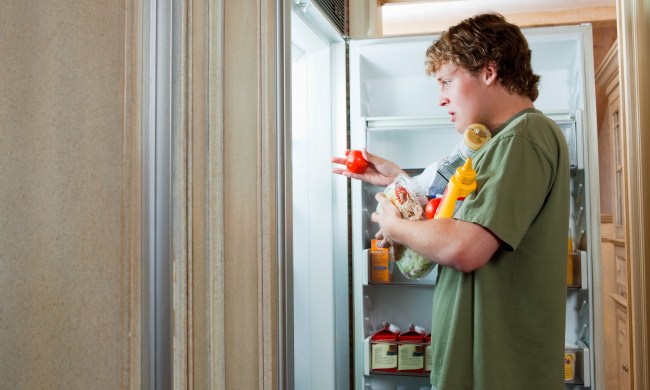In today’s world of extreme transparency and social media, the thought of your teen being preoccupied with self-image would seem rather concerning. Aside from that worry, you might wonder if an eating disorder would come into play, considering the images that bombard teens through social media and other outlets. Thus, knowing the facts behind teenagers’ eating disorders and how to talk to someone with an eating disorder might arm you with the knowledge to help prevent your children from falling into this cycle. Also, you will need to know what signs to watch for, and most importantly, that help is available.

What contributes to teenagers’ eating disorders?
While there is no single factor that triggers an eating disorder, experts associate eating disorders with a combination of factors, ranging from the outside environment to genetics. Some teens who suffer low self-esteem or are preoccupied with maintaining a certain body image tend to be the most vulnerable.
To be more specific, some contributing factors include:
- Biology – Relatives with eating disorders might suggest a possible genetic link.
- Environmental – Often, the media emphasizes thinness, pushing young people to drastic measures.
- Emotional or psychological issues – Anxiety or depression disorders are often linked with eating disorders.
- Sports activities – Participation in sports where there might be a focus on a person’s size might factor into this problem.
Ironically, teens who suffer from eating disorders rarely are aware of their condition. Usually, the behavioral pattern starts with moodiness, being depressed, or anxious and expands into avoiding friends and being sensitive to criticism. The problem becomes worse when a teen keeps the parents in the dark and hides all side effects.
Types of eating disorders
Another line of defense against these conditions is knowing exactly what you’re dealing with. Eating disorders often spring from another underlying condition or situation in the teen’s world, and as a result, create extreme disturbances in eating patterns. For example, a teen with anorexia refuses to keep a balanced body weight. The tten who has bulimia experiences episodes of binge eating accompanied by compulsive behaviors like vomiting or the use of laxatives, which rid the body of nourishment. Or some teens give way to binging characterized by uncontrolled overeating.
Here are the different types of eating disorders to watch for:
- Bulimia – Involves binging and purging
- Anorexia nervosa – Relates to excessive weight loss due to starvation
- Binge Eating Disorder – Characterized by a sense of loss of control of eating habits
- Avoidant/Restrictive Food Intake Disorder – Regarded as an aversion to food or to the practice of eating
There are also variances in these conditions, but having a general idea will at least guide you in the right direction toward prevention or getting help.

Eating disorders in teen boys
While we usually connect eating disorders with girls and young women, this issue has become increasingly common among boys and men as well. Of course, not everyone who expresses body image dissatisfaction develops an eating disorder. Plus, there’s another possible contributing factor with “weight classes” in certain sports which might place pressure on a young athlete to gain weight quickly or lose it.
So, if you have concerns and want to determine if your boy’s habits are normal or approach the eating behavior area, check for the following signs:
- Overly strict eating rituals
- Eating big quantities of food
- Visiting the bathroom during or immediately after a meal
- Declining certain food groups
- Entertaining unusual food behaviors
- Extreme focus on exercising
- Constantly reading nutrition information
- Counting calories or constantly weighing themselves
Although you might not hear of this condition occurring in boys as often, having an awareness still helps with prevention and if necessary, seeking treatment.
Detecting patterns early
Based on the eating disorder, symptoms can vary. Some red flags include:
- Regularly skipping meals or an extreme focus on food
- Severe weight loss
- Persistent complaints of being fat
- Frequent mirror checking for noticeable flaws
- Consuming laxatives, enemas, or diuretics after eating
- Exercising extensively to keep weight gain
- Forcing themselves to vomit
- Expressing guilt, disgust, or depression about eating habits
If you have noticed a few or all of these behavioral changes, then it’s time to have a calm conversation with your teen and to seek help.
How to talk to someone with an eating disorder
Talking with your child about their body image and eating habits can prove to be effective prevention or in some cases, an early intervention that leads to consulting with your family health care provider.
The few topics that always work involve the following:
Healthy eating habits
Explain to your child how a proper diet affects their health, energy, and appearance. Encourage them to eat when they are hungry.
Healthy body image
Initiate a discussion about their self-image and reassure them of the healthy body shapes. Don’t allow hurtful comments nicknames or even jokes based on someone’s physical characteristics.
Healthy self-esteem
Remind them of their accomplishments and positive qualities and support them in meeting their goals. Remind them how your love and acceptance are unconditional, no matter what. Plus, lots of listening goes a long way.
In the event your teen has an eating disorder, the suggested treatment will involve family therapy, assisting you to improve their eating habits while reaching a healthy weight and reducing other symptoms. Please be aware that if any other mental health condition is present, medication might be prescribed as well. However, no matter the treatment plan, early intervention will speed recovery.



